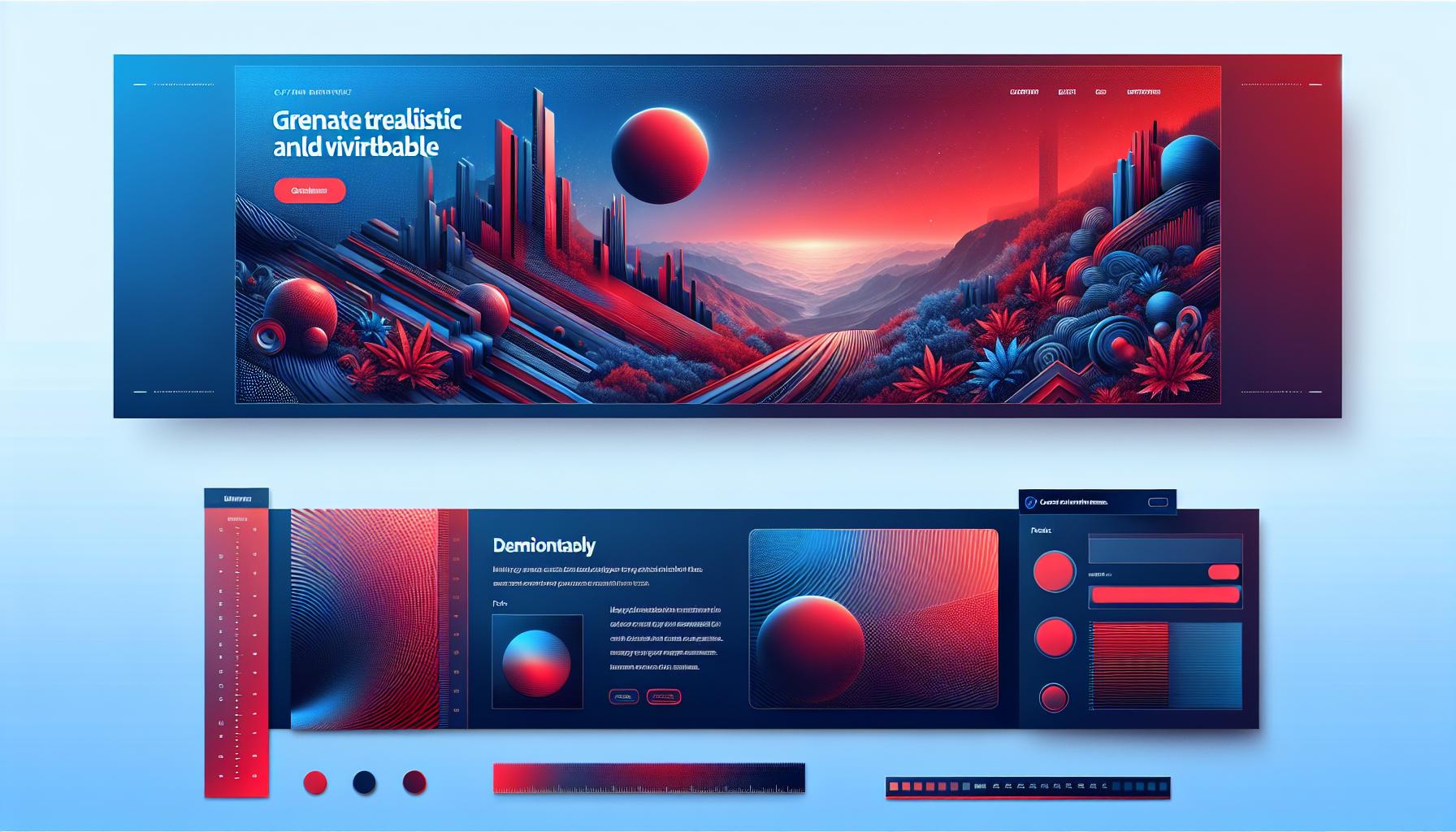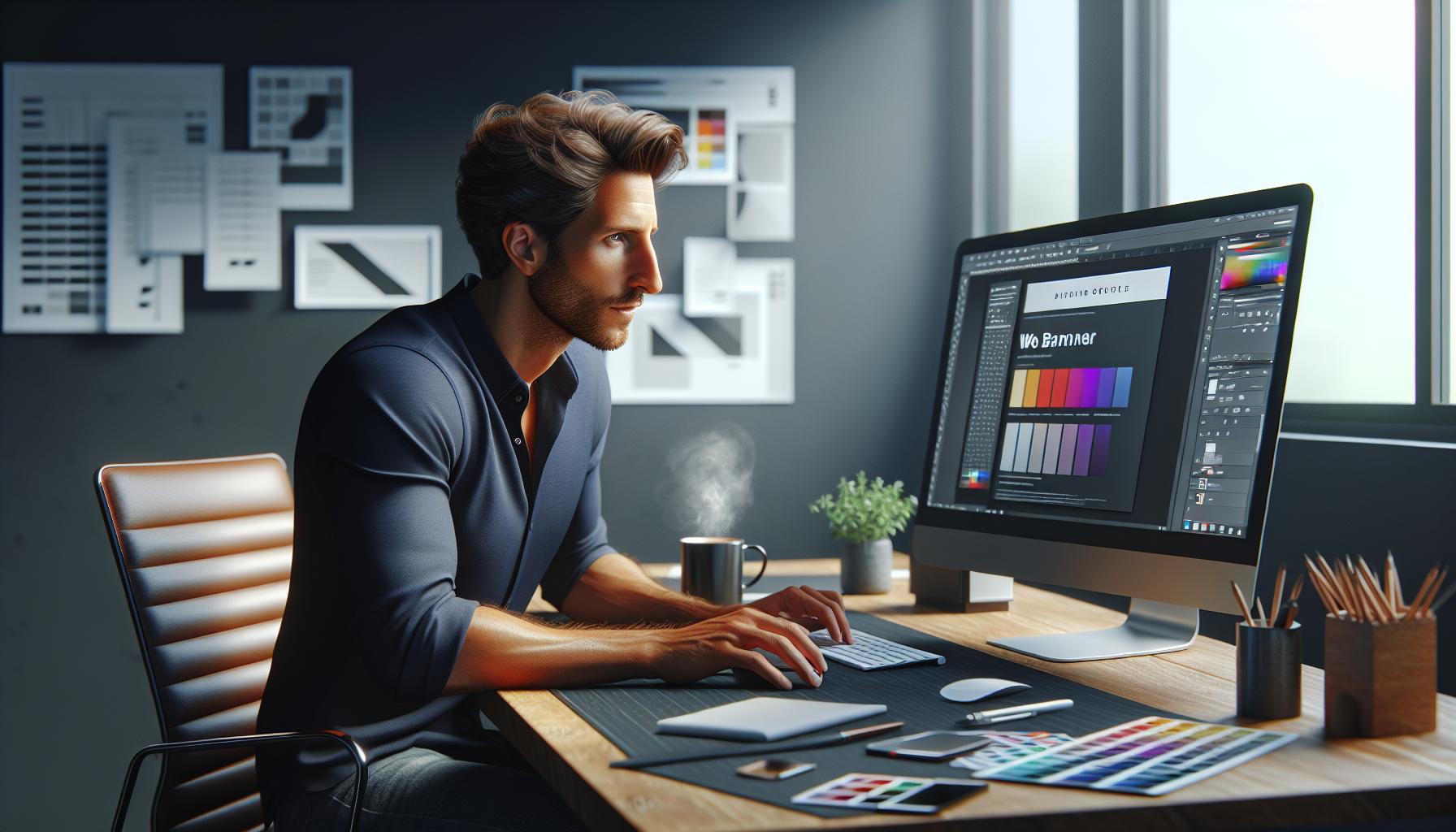Key Takeaways
- Impact of Web Banners: Effective web banner design is essential for capturing user attention and driving conversions in digital marketing.
- Key Design Elements: Successful banners require careful consideration of color selection, typography, imagery, and compelling calls-to-action (CTAs).
- Mobile Optimization: Prioritize mobile-friendly designs to ensure accessibility and enhance user experience across devices.
- Common Mistakes: Avoid information overload and distractions by maintaining clarity and focusing on essential messages within a banner.
- Current Trends: Stay updated on design trends like minimalism, bold typography, and animation to improve engagement and brand recognition.
- Continuous Testing: Regularly analyze performance data through A/B testing to refine banner effectiveness and optimize click-through rates.
In the fast-paced world of digital marketing, web banner design plays a crucial role in capturing attention and driving conversions. These eye-catching graphics serve as the gateway to a brand’s message, enticing users to click through and explore further. With the right combination of visuals and text, a well-designed banner can transform a simple ad into a powerful marketing tool.
As online competition intensifies, understanding the principles of effective web banner design becomes essential for businesses. From choosing the right colors to crafting compelling calls-to-action, every element counts in making a lasting impression. This article delves into the key strategies and best practices that can elevate banner design, ensuring it stands out in a crowded digital landscape.
Web Banner Design
Web banner design plays a pivotal role in digital marketing strategies. It serves as a critical medium for brands to communicate messages and capture user attention. Effective banners utilize visual appeal and concise messaging to engage users and drive conversions.
Key elements of successful web banner design include:
- Color Selection: Colors evoke emotions and influence user behavior. Brands often choose color schemes that align with their identity while maintaining contrast to ensure readability.
- Typography: Font style and size impact legibility. Designers often select clear and attractive fonts that complement the banner’s visual elements while conveying the message efficiently.
- Imagery: High-quality images can enhance a banner’s effectiveness by creating visual interest. Relevant imagery helps communicate the brand’s message without overwhelming the viewer.
- Calls-to-Action (CTAs): Compelling CTAs prompt users to take specific actions. Phrasing like “Shop Now” or “Learn More” creates urgency and encourages clicks.
Optimization of banner size and format is vital for performance across devices. Common dimensions include 728×90 pixels for leaderboard banners and 300×250 pixels for medium rectangles. Adapting banners for responsive design ensures accessibility and enhances user experience.
Continuous testing and analytics help refine banner effectiveness. Strategies include A/B testing different designs and monitoring click-through rates (CTR) to identify successful elements. By analyzing performance data, brands can make informed decisions to improve future campaigns.
Importance Of Effective Web Banner Design

Effective web banner design plays a critical role in digital marketing. It captures user attention and drives conversions, making it a fundamental component for online success.
Capturing User Attention
Banners must grab attention quickly. Bold colors, striking images, and clear typography attract users’ eyes. For example, using contrasting colors enhances visibility, especially against a website’s background. Incorporating animation can also draw focus, but it must not distract from the key message. Effective banners communicate the brand’s message succinctly while encouraging curiosity. An appealing design can increase the likelihood that users will engage with the banner.
Driving Click-Through Rates
High-quality banners lead to improved click-through rates (CTR). A well-structured banner includes a compelling call-to-action (CTA) that prompts user interaction. Effective CTAs are simple, yet urgent, such as “Shop Now” or “Learn More.” Research shows that personalized content, tailored to user interests, can boost CTR significantly. Additionally, optimizing banner size and format for various devices enhances accessibility, ensuring users can interact seamlessly, thus increasing click-through opportunities.
Key Elements Of Web Banner Design

Effective web banner design hinges on several crucial elements that together create impactful visual communication. Key components include color theory, typography choices, and the use of imagery and icons.
Color Theory and Usage
Colors evoke specific emotions and associations, directly influencing user behavior. Selecting colors that align with the brand’s identity enhances recognition. For instance, blue conveys trust, while red incites urgency. Utilizing a limited color palette fosters cohesion, while contrasting colors can draw attention to essential elements, such as CTAs. Implementing color gradients can add depth, making banners visually striking without overwhelming viewers.
Typography Choices
Legibility remains paramount in typography. Choosing clear, sans-serif fonts ensures that messages remain readable across devices. Font sizes should vary, with headings larger than body text to create a visual hierarchy. Consistency in font usage across banners reinforces brand identity. Utilizing bold or italic styles for emphasis can highlight important phrases, while limiting the number of different fonts used maintains clarity and professionalism.
Imagery and Icons
High-quality imagery and well-designed icons enhance the visual appeal of banners. Images should represent the brand or message effectively, catering to target audiences. Stock photos can be useful, but custom images create a unique identity. Icons serve as quick visual cues, helping to guide users’ attention. Ensuring that images and icons are appropriately sized and optimized for fast-loading times prevents user frustration, ultimately increasing engagement.
Common Mistakes In Web Banner Design

Web banner design carries the risk of common pitfalls that can diminish effectiveness. Identifying these mistakes helps in creating banners that capture attention and drive engagement.
Overloading With Information
Overloading with information creates visual clutter, overwhelming viewers. Maintaining clarity by focusing on essential messages ensures that key elements stand out. A concise message, ideally seven words or fewer, effectively communicates the core idea. Using one main image and a single call-to-action (CTA) avoids distractions that dilute impact. Striking a balance between being informative and appealing attracts more clicks without risking viewer fatigue.
Ignoring Mobile Optimization
Ignoring mobile optimization results in poor user experiences across devices. Optimizing web banners for smaller screens guarantees accessibility for a significant audience. Designers should consider responsive layouts that adjust text size and images for readability on mobile devices. Recommended dimensions for mobile banners include 320×50 pixels for banners and 300×250 pixels for in-content placements. By prioritizing mobile-friendly designs, businesses enhance engagement and drive higher conversion rates.
Trends In Web Banner Design
Web banner design trends evolve constantly, reflecting technological advancements and shifting user preferences. Current trends include:
- Minimalism: Less is more in web banner design. Clean layouts with ample white space enhance clarity and focus on essential messages. Streamlined designs attract user attention by reducing distraction.
- Bold Typography: Large, attention-grabbing fonts convey messages quickly. Unique typography styles serve to establish brand identities and engage users more effectively.
- Vibrant Colors: Bright, bold colors dominate web banners, creating emotional connections and stand out against competitors. Color gradients and duotones add depth and modernity to designs.
- Animation: Subtle animations capture attention without overwhelming users. Moving elements guide viewers through the content and encourage interaction, increasing engagement rates.
- Micro-Interactions: Integrating small interactive elements enhances user experience. Micro-interactions can include hover effects or click animations that provide feedback, keeping users engaged.
- Personalization: Tailored content based on user behavior and preferences boosts relevance. Banners that reflect individual interests lead to higher click-through rates (CTR) and conversions.
- Responsive Design: Banners must adapt seamlessly across different devices and screen sizes. Responsive layouts ensure optimal viewing experiences, enhancing accessibility for all users.
- Storytelling: Banners now often convey narratives over static images. Using visual storytelling techniques draws users in, encouraging them to connect further with the brand.
- Integrated Social Proof: Featuring customer testimonials or user-generated content builds trust. Showcasing real feedback on banners enhances credibility and reduces users’ hesitations.
- Sustainable Design: Eco-friendly design practices are gaining traction. Using sustainable materials and messages resonates with environmentally-conscious consumers, aligning brand values with user preferences.
Understanding and integrating these trends into web banner design can significantly improve marketing effectiveness and user engagement in the competitive digital landscape.
Effective Web Banner Design
Effective web banner design is crucial in today’s competitive digital landscape. By focusing on elements like color, typography, and imagery, brands can create banners that not only capture attention but also drive user engagement. Continuous testing and optimization are key to ensuring banners resonate with target audiences.
Staying updated on current design trends can further enhance a brand’s visibility and effectiveness. Embracing minimalism, bold typography, and personalization can lead to improved click-through rates and conversions. Ultimately, investing in high-quality banner design is a strategic move that can significantly impact digital marketing success.



